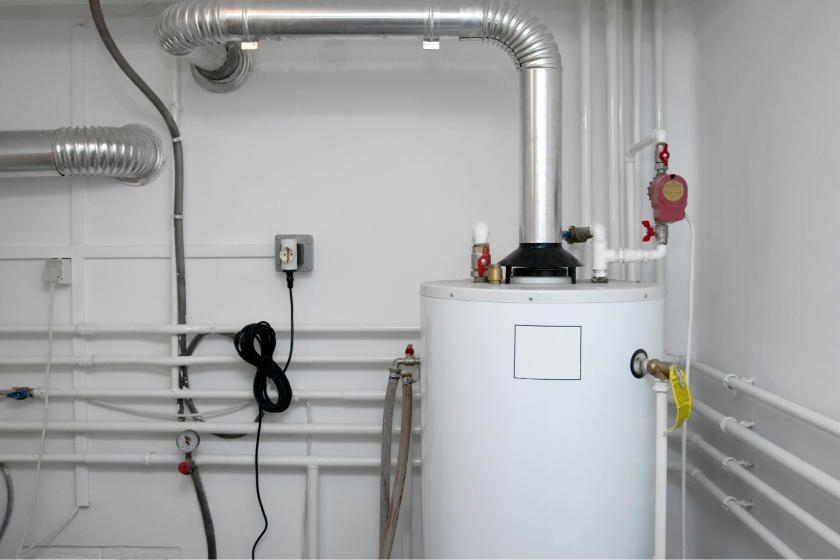Making Sure Durability of Your Home's Hot Water System: Care Tips
Making Sure Durability of Your Home's Hot Water System: Care Tips
Blog Article
The publisher is making a number of good pointers on the subject of What Kind of Maintenance Do Water Heaters Need? in general in the article in the next paragraphs.

Warm water is necessary for daily comfort, whether it's for a rejuvenating shower or washing recipes. To ensure your warm water system runs efficiently and lasts much longer, regular maintenance is crucial. This post offers functional ideas and understandings on just how to keep your home's hot water system to prevent disturbances and costly repair services.
Introduction
Maintaining your home's warm water system could seem overwhelming, but with a couple of straightforward steps, you can ensure it runs efficiently for years ahead. This guide covers everything from recognizing your warm water system to do it yourself maintenance pointers and understanding when to call professional assistance.
Relevance of Keeping Your Hot Water System
Routine upkeep not only prolongs the lifespan of your hot water system yet also ensures it runs successfully. Neglecting maintenance can cause lowered efficiency, greater power bills, and even early failing of the system.
Signs Your Hot Water System Requirements Upkeep
Recognizing when your warm water system needs interest can stop significant concerns. Keep an eye out for indicators such as irregular water temperature, unusual noises from the heating system, or rustic water.
Purging the Water Heater
Flushing your water heater eliminates debris buildup, improving performance and prolonging its life.
Checking and Replacing Anode Rods
Anode rods stop rust inside the storage tank. Inspecting and replacing them when worn is vital.
Complex Problems Needing Expert Aid
Instances include major leakages, electrical troubles, or if your hot water heater is continually underperforming.
Regular Expert Maintenance Benefits
Specialist upkeep can consist of complete assessments, tune-ups, and making sure compliance with safety standards.
Examining and Adjusting Temperature Setups
Readjusting the temperature settings ensures optimal efficiency and safety and security.
Do It Yourself Tips for Maintenance
You can perform several maintenance tasks yourself to maintain your warm water system in leading condition.
Checking for Leaks
On a regular basis check pipelines and links for leaks, as these can result in water damage and greater expenses.
Understanding Your Hot Water System
Prior to diving into maintenance jobs, it's useful to comprehend the fundamental parts of your hot water system. Normally, this consists of the water heater itself, pipes, anode poles, and temperature controls.
Month-to-month Maintenance Tasks
Routine month-to-month checks can assist catch minor problems prior to they rise.
Testing Stress Alleviation Valves
Examining the stress safety valve guarantees it functions appropriately and prevents extreme stress accumulation.
Protecting Pipes
Shielding hot water pipes reduces heat loss and can save power.
When to Call an Expert
While DIY maintenance is useful, some issues require specialist experience.
Final thought
Normal maintenance of your home's hot water system is necessary for effectiveness, long life, and price financial savings. By following these ideas and knowing when to look for expert help, you can ensure a reputable supply of hot water without unanticipated disturbances.
How to Maintain an Instant Hot Water Heater
Before tinkering with your hot water heater, make sure that it’s not powered on. You also have to turn off the main circuit breaker and shut off the main gas line to prevent accidents. Also turn off the water valves connected to your unit to prevent water from flowing into and out of the appliance. 2. When you’re done, you have to detach the purge valves’ caps. These look like the letter “T†and are situated on either side of the water valves. Doing so will release any pressure that has accumulated inside the valves while at the same time avoid hot water from shooting out and burning your skin. 3. When the purge valves’ caps are removed, you have to connect your hosing lines to the valves. Your unit should have come with three hoses but if it didn’t, you can purchase these things from any hardware or home repair shops. You can also get them from retail stores that sell water heating systems. Read the user’s manual and follow it to complete this task properly. When the hosing lines are connected, open the purge port’s valves. 4. You should never use harsh chemical cleaners or solutions when cleaning your unit. Make use of white vinegar instead. It should be undiluted and you’ll probably use about 2 gallons. 5. Now flush your water heater. This task should probably take about 40 minutes. We can’t give you specific directions for this because the procedure is carried out depending on the type, model and brand of your heater. With that being said, refer to the user’s manual. 6. When you’re done draining the unit, you have to turn off the purge port valves again. Remove the hosing lines that you earlier installed on each of the water valves. Put the valve caps (purge port) back in their respective places and be very careful so as not to damage the rubber discs that are found inside these caps. 7. Now that everything’s back in place, check your user’s manual again to find out how to reactivate your water heating system. 8. Once it is working, turn one of your hot water faucets on just to let air pass through the heater’s water supply pipes. Leave the tap on until water flows smoothly out of it. https://www.orrplumbing.com/blog/2014/september/how-to-maintain-an-instant-hot-water-heater/

I am just very interested by What Kind of Maintenance Do Water Heaters Need? and I am hoping you enjoyed reading the new blog posting. For those who enjoyed our blog post if you please remember to share it. Bless you for being here. Please come by our website back soon.
Article Report this page